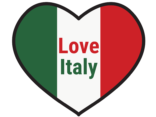In Italy, the quality of tap water is generally high and safe to drink in most parts of the country. However, when it comes to drinking tap water in restaurants, it’s not a common practice. While it’s not illegal to ask for tap water, and you could certainly drink it, most restaurants prefer to serve bottled water, both still and sparkling, and it’s what locals usually consume. This article will delve into the reasons behind this cultural norm and provide further insights into the safety and acceptability of drinking tap water in Italian restaurants.
Understanding the Safety of Drinking Tap Water in Italian Restaurants

In the realm of culinary delights, Italy stands as a beacon of gastronomic excellence. From the rich, hearty pastas of the north to the vibrant, fresh seafood of the south, the country’s cuisine is as diverse as it is delicious. However, one question that often arises among tourists and visitors is: Can I drink tap water in restaurants in Italy? The answer, in short, is yes. But, as with many things, there’s more to the story.
Italy is renowned for its stringent food and drink regulations, and water is no exception. The country’s tap water is subject to rigorous testing and quality control measures, ensuring it meets high safety standards. This means that, in general, tap water in Italy is safe to drink. However, the taste and quality can vary significantly from region to region, largely due to differences in local water sources and treatment processes.
In many Italian restaurants, it’s common practice to serve tap water upon request. This is typically provided in a carafe, free of charge. However, it’s worth noting that bottled water is often the default option, and in some establishments, particularly those of a higher caliber, it may be considered more appropriate to order bottled water. This is not necessarily a reflection of the tap water’s safety, but rather a cultural norm and a nod to the country’s proud tradition of producing high-quality mineral waters.
That said, there are some areas, particularly in the south of Italy, where the tap water may not be recommended for drinking. This is usually due to the presence of certain minerals or salts that, while not harmful in small quantities, can affect the taste and potentially lead to minor digestive discomfort if consumed in large amounts. In these cases, locals and visitors alike tend to opt for bottled water.
It’s also worth noting that, while the tap water in Italy is generally safe to drink, it may not always be to everyone’s taste. The water can sometimes have a slightly chlorinated flavor, particularly in larger cities. This is a result of the disinfection process used to ensure the water’s safety, and while it’s perfectly harmless, some people may find it off-putting.
In conclusion, if you’re dining out in Italy and you’re unsure about the tap water, don’t hesitate to ask. Most restaurant staff will be more than happy to advise you on whether it’s best to stick with tap water or opt for bottled. And remember, while the tap water in Italy is generally safe to drink, it’s always a good idea to stay hydrated, particularly during the hot summer months. So whether you choose tap or bottled, make sure you drink plenty of water to complement your Italian culinary adventure.
In essence, the safety of drinking tap water in Italian restaurants is generally assured, thanks to the country’s rigorous quality control measures. However, regional variations in taste and quality, along with cultural norms and personal preferences, mean that bottled water is often a popular choice. As always, when in doubt, don’t hesitate to ask for advice. After all, the Italian dining experience is as much about the hospitality as it is about the food and drink.
Conclusion
In Italy, tap water in restaurants is generally safe to drink. However, it’s always a good idea to ask the staff if the tap water is potable, as the quality can vary depending on the region.
Secure Your Dream Italian Experience Before It’s Gone!
Planning a trip to Italy? Don’t let sold-out tours or overcrowded attractions spoil your adventure. Unmissable experiences like exploring the Colosseum, gliding through Venice on a gondola, or marvelling at the Sistine Chapel often book up fast—especially during peak travel seasons.

Booking in advance guarantees your place and ensures you can fully immerse yourself in the rich culture and breathtaking scenery without stress or disappointment. You’ll also free up time to explore Italy's hidden gems and savour those authentic moments that make your trip truly special.
Make the most of your journey—start planning today and secure those must-do experiences before they’re gone!
